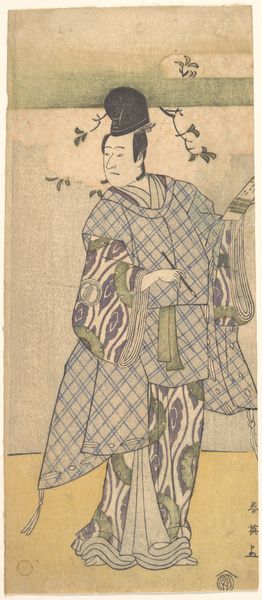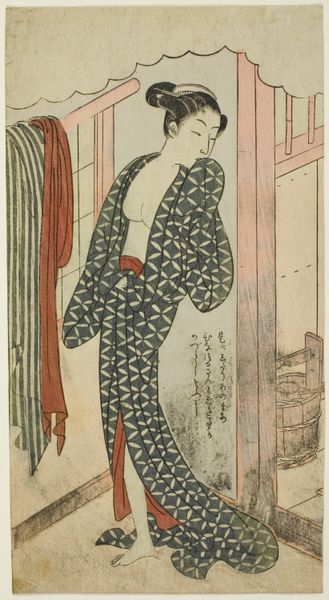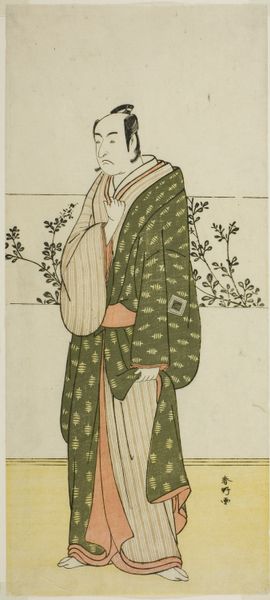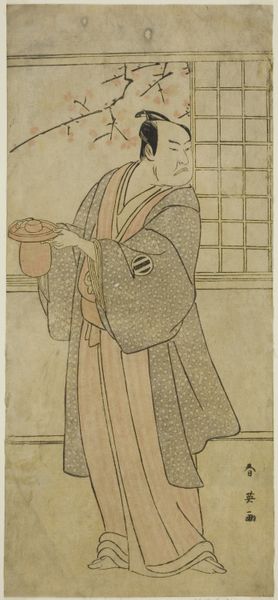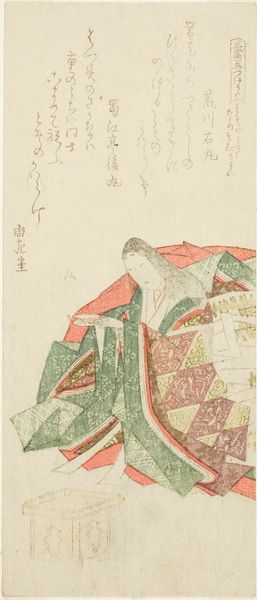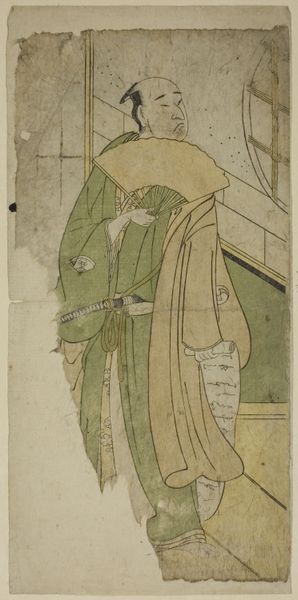
print, textile
#
portrait
# print
#
asian-art
#
textile
#
ukiyo-e
#
nude
Dimensions: 27 1/4 × 4 3/4 in.
Copyright: Public Domain
Curator: Katsukawa Shuncho's "Woman Dressing," created circa 1780 to 1801 and currently residing at The Art Institute of Chicago, presents us with an intriguing example of ukiyo-e printmaking. Editor: Immediately striking is the intimate moment captured – a woman, partially undressed, seems lost in a quiet ritual. There’s a subtle sensuality and fragility evoked. Curator: Indeed. As a woodblock print, "Woman Dressing" would have been produced through a labor-intensive process. Multiple blocks, each carefully carved and inked, would have been used to build up the image layer by layer. We see the intricate patterns on her robe – they speak volumes about textile production of that era. Editor: The imagery resonates deeply. The mirror symbolizes vanity and self-reflection. The branch with leaves speaks of beauty and the fleeting nature of life, tying in to larger symbolic codes used to reflect concepts about beauty and mortality. Curator: I see her discarded clothing as representing changing social status of women reflected through these mass produced artifacts – or the cost and access of textiles during that era and for whom? Editor: Her slightly averted gaze carries a weight of untold stories, representative of archetypal themes tied into femininity. Curator: Perhaps, but her expression can also reveal a narrative of women consumers of ukiyo-e, that in itself is an agency achieved. Editor: The style itself is representative. Ukiyo-e frequently explored themes of leisure and the ephemeral nature of pleasure. The setting, partially indoors and perhaps partially open, offers a feeling that these items such as fans or textiles all reflect this culture. Curator: It is worthwhile noting the economic forces driving the creation and consumption of prints like this. Woodblock printing democratized art production making it accessible to middle classes while being made by working-class craftsman. The tools and materials available defined the possibilities. Editor: This piece really gives the concept of transient beauty of daily life that the cultural aesthetics offer while revealing how symbolic messaging plays a role across generations, whether consumer or maker. Curator: Precisely, this work highlights the labor and material processes underlying the images, making us ponder issues surrounding class, consumption, labor, and its societal context.
Comments
No comments
Be the first to comment and join the conversation on the ultimate creative platform.



